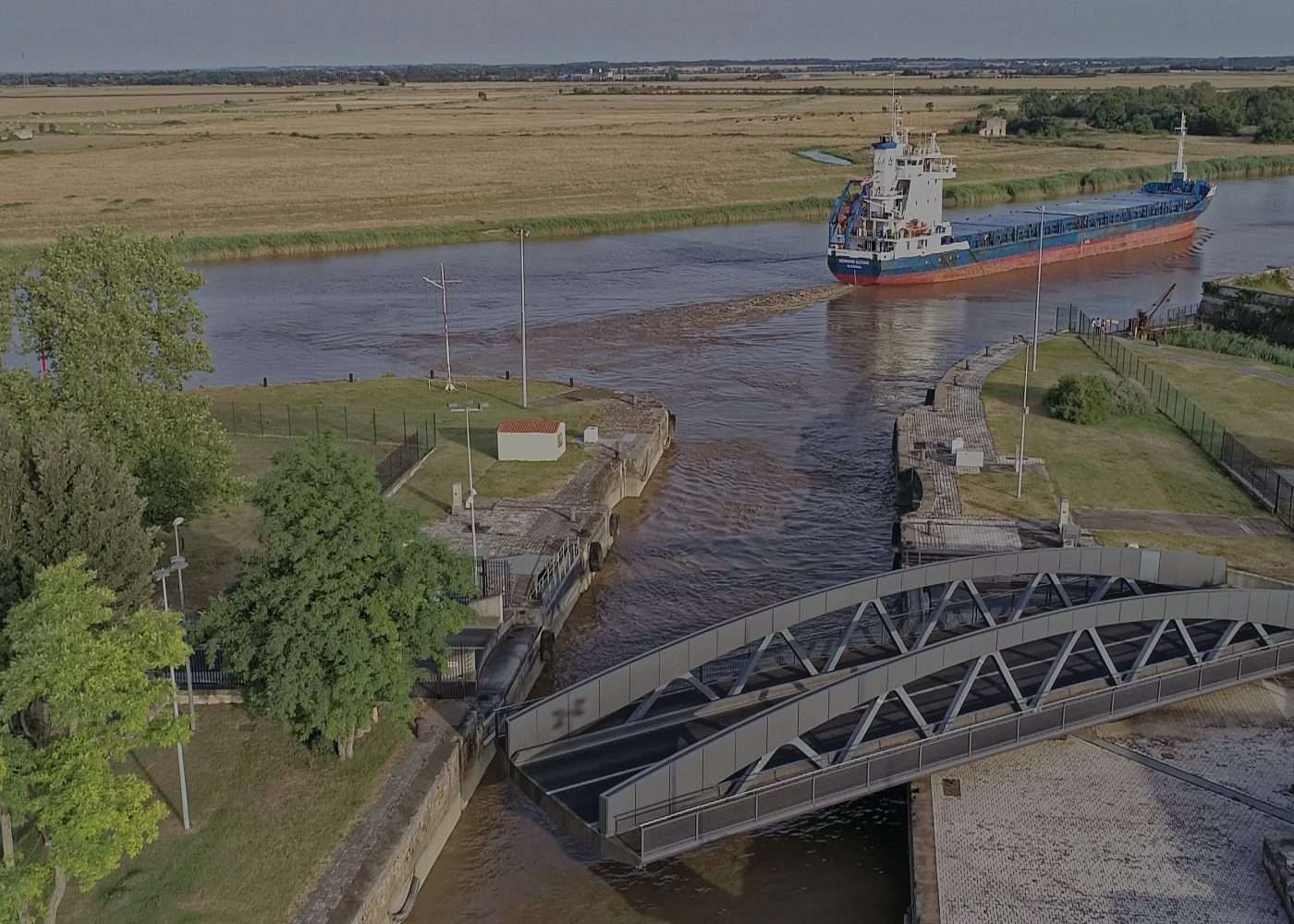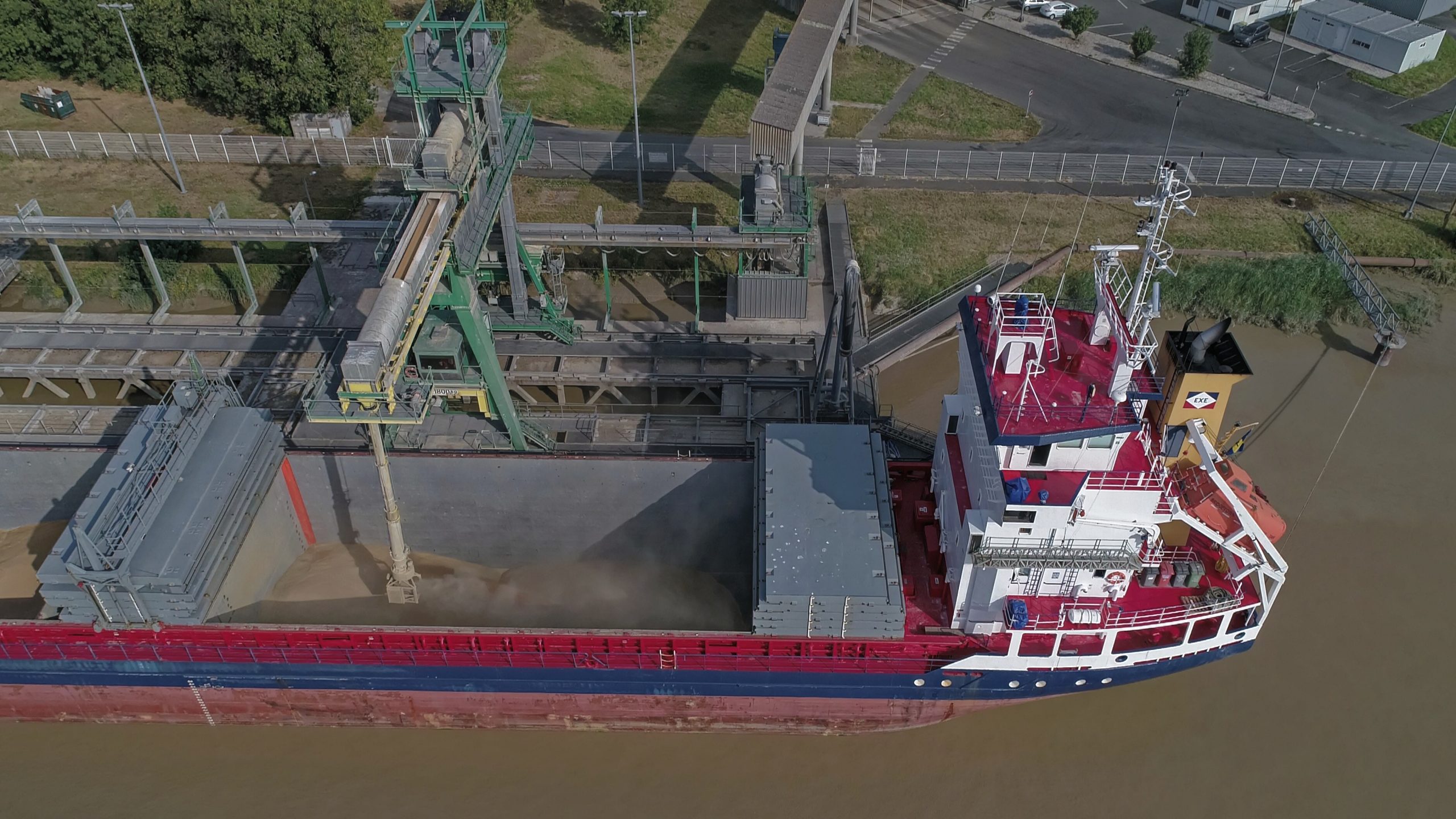Sectors: Traffic at the Charente Atlantique Commercial Port
The handling of diverse goods positions the two port sites of Rochefort and Tonnay-Charente as key partners for the region’s economic players.

Port Activity in Figures
The Charente Atlantique commercial port comprises the port sites of Rochefort and Tonnay-Charente. These ports significantly contribute to the region’s maritime traffic.
The volumes and diversity of goods handled by the ports demonstrate their dynamism and capacity to support the region’s commercial activity.
The ability of these two facilities to meet the demands of local businesses is reflected in the volume of imports, while exports ensure supply and maintain economic balance.
2024 Figures:
- 598,000 tons
- 56% imports
- 44% exports
- 196 port calls
The Charente Atlantique Port is a European and North African coastal shipping hub. Nearly three-quarters of the goods originate from or are destined for Northern European countries, while the rest come from Southern Europe, the Baltic countries, or Morocco. Traffic to other French ports accounts for 5% of the total traffic.
Rochefort and Tonnay-Charente have also successfully developed their capacity to handle a variety of goods, allowing for the import of essential raw materials for production while facilitating the export of finished products to international markets. Beyond its economic impact, this diversity of goods plays a significant social role by promoting local job creation.

Sectors
The Charente Atlantique commercial port manages and handles a variety of sectors, demonstrating versatility and expertise in the handling of goods. Fertilizers, grains, and construction materials such as clay and sand are central to the port’s activities. These are followed by wood, scrap metal, cement, tire waste, and peat.
Fertilizers
The fertilizer sector is handled at the Port of Rochefort and is directly tied to the region’s
agricultural activity. The fertilizers handled are diverse, including nitrogen, phosphate,
potassic, and urea fertilizers. Handling fertilizers requires specific expertise, which the
Port of Rochefort possesses.
2024: 125,000 tons, or 20% of total activity
Grains
A specialty of the Port of Tonnay-Charente, the grain sector includes the handling of
corn, wheat, sunflower, barley, oats, rapeseed, and peas. The agricultural economy of
the Charente-Maritime department and the Nouvelle-Aquitaine region contributes
significantly to this export activity.
2024: 80,000 tons, or 13% of total activity
Clay and Sand
Construction materials rank third among the goods handled. The Port of Tonnay-
Charente is equipped with a sand dock and specific facilities for sand processing. Clay
is managed at the Port of Rochefort.
2024: 128,000 tons, or 22% of total activity
Wood
Sawn and chipped wood hold a significant position in imports. The Port of Rochefort is
the third-largest French port for softwood lumber imports. Sawn wood is almost
exclusively destined for the construction sector, while wood chips are recycled for
heating purposes.
2024: 60,000 tons, or 10% of total activity
Iron
Scrap metal, for export, is destined for remelting and recycling, contributing to
sustainable waste management. Imported wire mesh, a construction material, is also
handled at the Port of Rochefort.
2024: 157,000 tons, or 26% of total activity
White Cement
The import of white cement helps supply local businesses. The handling of this material
is carried out at the Port of Rochefort.
2024: 21,000 tons, or 5% of total activity
Tire Waste
The Port of Rochefort also handles the processing of tire waste, thereby contributing to
the promotion of environmentally friendly practices.
2024: 17,000 tons recycled, or 3% of total activity
Peat
Peat, mainly used in horticulture and agriculture, is processed at the Port of Rochefort.
2024: 5,500 tons, or 1% of total activity